159. What are the characteristics of polyvinyl chloride (PVC)?
Answer: PVC, abbreviation PVC, is a white, non-toxic, odorless, amorphous powder with a density of 1.35 to 1.46 and no significant melting point. Non-flammable, insoluble in water, alcohol, gasoline, etc., soluble in tetrahydrofuran, methyl ethyl ketone and acetone and carbon disulfide mixture solvent. It swells in aromatics, chlorinated hydrocarbons, and some solvents such as ethers and ketones, and is stable to acids, bases, and salts at room temperature. However, the thermal stability is poor. The hard product starts to soften at 60-80°C, has plasticity at 120-150°C, and releases HCI gas when heated for a long time. The polyvinyl chloride resin can not be crystallized and assumes an amorphous form, and has a wide range of flow temperatures, that is, a wide temperature range from the thermoelastic to the thermoplastic state is 160 to 180°C. Various PVC products are easy to screen printing.
160. What are the weaknesses of PVC?
Answer: PVC's weaknesses generally include two aspects. On the one hand, it means that polyvinyl chloride resin has certain toxicity, because vinyl chloride resin remains in the polyvinyl chloride resin and it is a harmful substance. For PVC used in food packaging, the general international regulations stipulate that the residual amount of vinyl chloride monomer is less than 1ppm for safe non-toxic products; and the additives used for food packaging PVC should also be non-toxic; on the other hand, it is thermally stable. Poor quality, easy to cause heat decomposition to varying degrees of decomposition; soft products also make plasticizers out of the lack of deformation can not be fully restored, and will become hard at low temperatures.
161. What are the main characteristics of perchloroethylene (CPVC)?
A: The chemical name of chlorinated vinyl chloride is chlorinated polyvinyl chloride, an alias for vinyl chloride resin, abbreviated as CPVC. It is a white or slightly light-colored powder or loose fine particles, odorless, odorless, non-toxic, non-flammable, thermoplastic. , The maximum continuous use temperature is up to 105°C, good solubility, can dissolve spinning (chlorin fiber), has good adhesive properties, can be used as a coating and adhesive, can be dissolved in chlorobenzene, acetone at room temperature Various solvents such as tetrachloroethane. The chlorine content of CPVC is 56.8%. As the chlorine content increases, the density increases, the tensile strength increases, the softening point increases, and the melt viscosity increases. When the chlorine content is 65%, the density is 1.52, and the chlorine content is 60%, the softening point is 80 to 90°C, and 68% is 130°C. CPVC is characterized by excellent heat resistance, aging resistance, and chemical resistance.
162. What are the main uses of perchloroethylene (CPVC)?
A: The perchloroethylene produced by the solution method is mainly used for the production of adhesives, fibers and paints; the suspended vinyl chloride is mainly used for pipes, plates and fibers. Widely used in anti-corrosion coating of machine tools, meters, etc., fabrics, anti-corrosion filter cloths, special work clothes, weaving nets, etc., widely used in metal, wood adhesive, film products, cable coating, electrical parts and so on.
163. What are the main uses of polyvinylidene chloride (PVDC)?
A: PVDC resin is mainly used in the manufacture of films and fibers, and is used in large quantities for the manufacture of heat-shrinkable films and self-adhesive films. Since these films have extremely low moisture permeability and air permeability, they are ideal airtight packaging materials and can also be used as moisture-proof coatings and adhesives.
164. What are the main characteristics of polystyrene (PS)?
A: PS, a colorless, transparent spherical or granular thermoplastic resin, odorless, odorless, density 1.05, melting temperature 150 ~ 180 °C, thermal decomposition temperature of 300 °C, low moisture absorption, easy processing and Dyeing, good dimensional stability, a certain degree of mechanical strength, rigidity and hardness. However, it is brittle and easily cracked, flammable, resistant to impact, and not resistant to high temperatures (such as boiling water). It is prone to cracks or decomposition. The maximum operating temperature is 60 to 80°C. Not resistant to oils, acids, alcohols, greases, etc., soluble in benzene, toluene, styrene, carbon tetrachloride, chloroform, o-dichlorobenzene, ketones (except acetone), esters and other organic solvents. Resistant to various mineral oils, organic acids, bases, salts, lower alcohols and aqueous solutions.
165. What are the uses of polystyrene (PS)?
A: Expandable polystyrene is the raw material of polystyrene foam, which is an important shockproof material in the packaging industry. Polystyrene plastics can be machined with drills, saws, etc. It can also be cut with electric wires or with solvents such as benzene and styrene. Its surface is easy to color, print, and metallize. Can produce a variety of instrument housings, automotive lampshades, optical components, transparent sheets, transparent models, transparent containers, telecommunications components (such as film can be used for high-frequency capacitors), etc., can also produce a variety of industrial and daily necessities, such as caps, Packaging containers.
166. What kind of monomer does the ABS resin of the modified type of polystyrene consist of?
A: The ABS resin consists of three monomers: acrylonitrile, butadiene and styrene. Acrylonitrile can make ABS have good chemical resistance and surface hardness; butadiene can make ABS tough; styrene can make it have good processing and dyeing properties, easy to screen printing.
167. What are the main properties of ABS resin?
A: ABS resin is light yellow sticky or granular resin, melting temperature is 217 ~ 237 °C, thermal decomposition temperature is greater than 250 °C, non-toxic, odorless, low water absorption, excellent physical and mechanical properties, excellent low temperature impact resistance Performance, insulation and high-frequency dielectric properties, abrasion resistance, dimensional stability, chemical resistance, dyeability and other characteristics, easy molding and machining. At the same time also has water resistance, inorganic salts, alkalis and acids, insoluble in most alcohols and hydrocarbon solvents, soluble in aldehydes, ketones, esters and some chlorinated hydrocarbons. ABS resin is opaque, flammable, poor weather resistance, low heat distortion temperature.
168. What are the main uses of ABS resin?
A: ABS resin is one of the important engineering plastics. Widely used in the automotive industry, electrical instrumentation industry and machinery industry. Commonly used in the production of gears, bearings, pipes, instrument panels, electrical enclosures, refrigerator linings, etc., can also make a lot of automotive parts. ABS resin plating products can also be used as a substitute for metal materials, used for making nameplates, decorative parts and so on.
169. What is a polyamide resin?
A: Polyamide resin is a general term for linear thermoplastic resins with many repeating amide groups. It is mainly made up of dibasic acid and diamine or polycondensation of amino acid hydrocarbons. It is usually called nylon. When it is used for fiber, it is called nylon.
170. How to name a polyamide resin?
A: The nomenclature of the polyamide resin is determined by the number of carbon atoms in the diamine and dibasic acid. The polycondensate obtained from the reaction of hexamethylene diamine and sebacic acid is called nylon 610, and the former number 6 refers to the binary element. The number of carbon atoms in the amine, and the latter number 10 is the number of carbon atoms in the dibasic acid; if made from the self-assembly of amino acids, it is determined by the number of carbon atoms in the amino acid, such as 6 carbon atoms in caprolactam Therefore, the self-polymer is called nylon 6 or polycaproamide.
171. What are the characteristics and uses of polyamide resin?
A: Compared with other thermoplastics, polyamide has a narrow range of heat softening temperature and has a relatively distinct melting point. At the same time good alkali resistance, can withstand the corrosion of aromatic hydrocarbons. It also has the characteristics of wear resistance, heat resistance, cold resistance, drug resistance, solvent resistance, oil resistance, light weight, easy molding, excellent mechanical properties, non-toxicity, easy dyeing, and easy screen printing. The disadvantages are poor acid resistance, light resistance, and stain resistance, and its thermal expansion and absorption are large, which easily affects the dimensional accuracy.
Polyamide resins are mainly used in the fields of machinery, instrumentation and film packaging.
172. What is polyurethane (PU)? What are the main uses of polyurethane?
A: Polyesters containing multiple (-NH-CO2-) repeat groups in the main chain of the polymer are commonly referred to as polyurethanes, or polyurethanes for short, which are commonly referred to as PUs.
Polyurethanes are mainly used for the manufacture of foam plastics. They can also be used to make polyurethane elastomers, which are divided into soft and hard parts. They are the main materials for the manufacture of parts and components in the machinery industry. Used in the printing industry for the production of printing rollers and screen printing squeegees.
(The author/ Yan Su Zhai)
| Certificate |
ISO14001, ISO18000, ISO9001 Certificate,
and GS certificate from TUV Company of Germany.
|
| Color | Various, according to your requirements |
| Materials |
A. Plastic parts: Imported LLDPE E. Outer cover: Soft Covering PVC
(Different material is available according to your needs)
|
| Advantage |
a.Anti-UV
b.Anti-static
c.Security
d.Environmental protection e.Uneasy to lose shape |
| Function |
1.Can protect children safe when they playing indoor, and let they enjoy the play freely 2.Suitable for improving Children energy and imagination 3.Helping them grow up happily, cleverly, and healthily |
| Age Range | Children |
| Apply to | Amusement park, gymnasium, Kindergarten, Preschool, etc. |
| Packing | Standard export packing |
| Remark |
We can design and produce as your requirements |
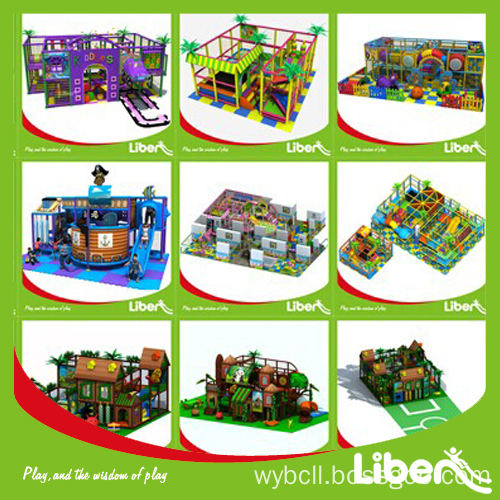

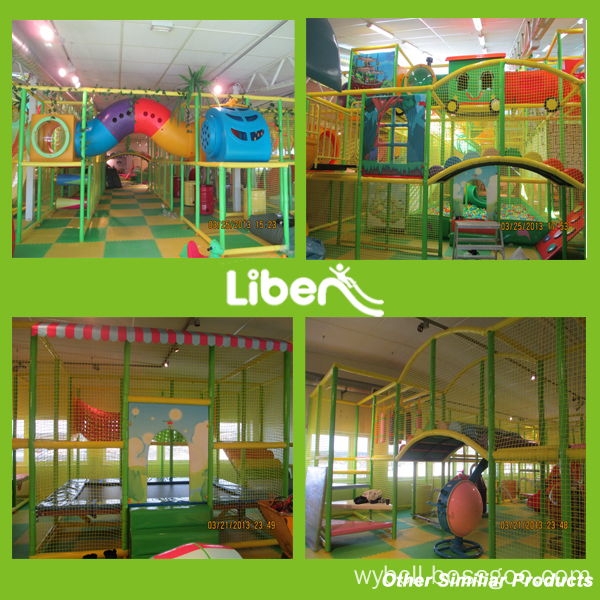
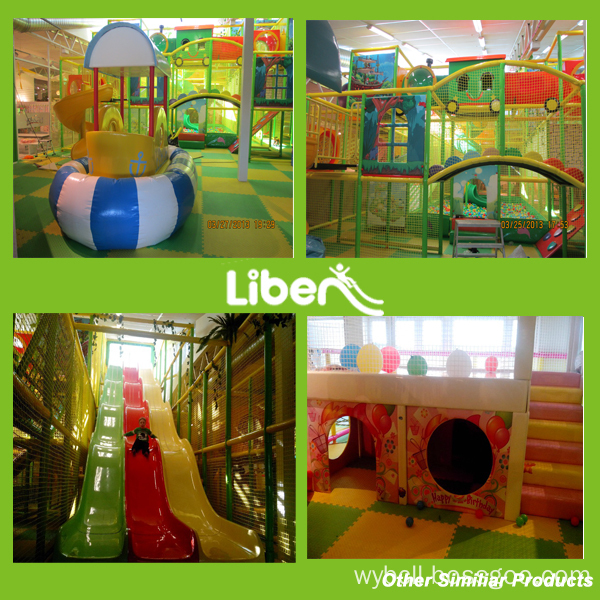
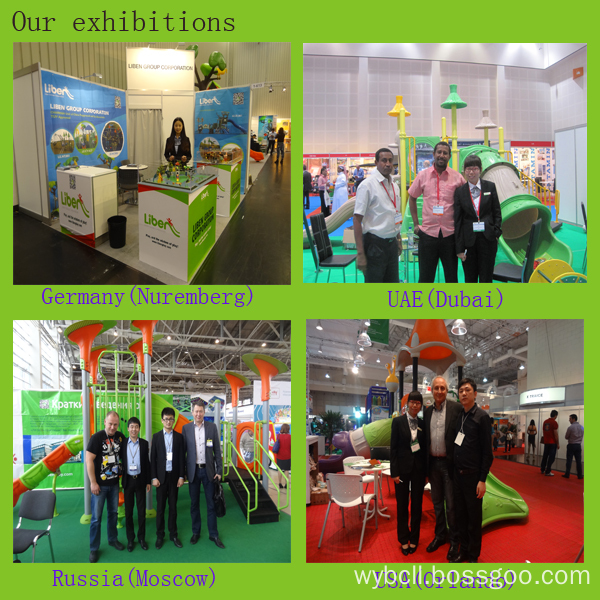
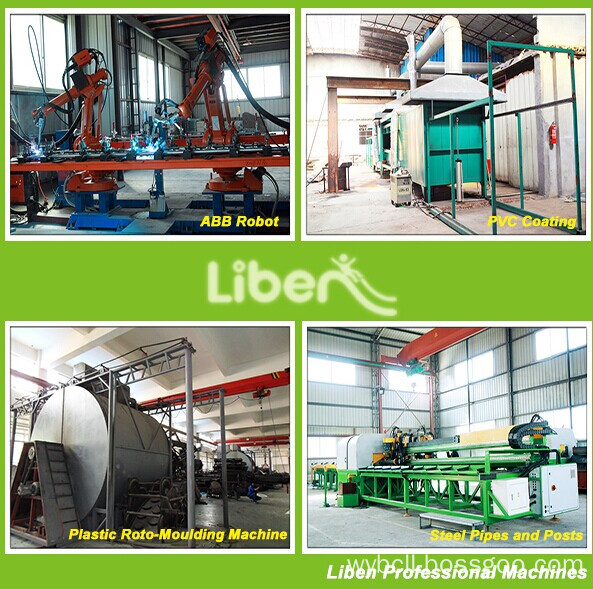
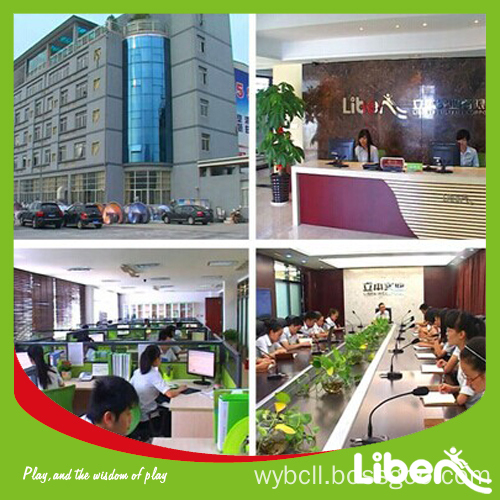
Kids Soft Play, Soft Play Areas, Childrens Soft Play, Soft Play Centre
Liben Group Corporation , http://www.trampolinearea.com